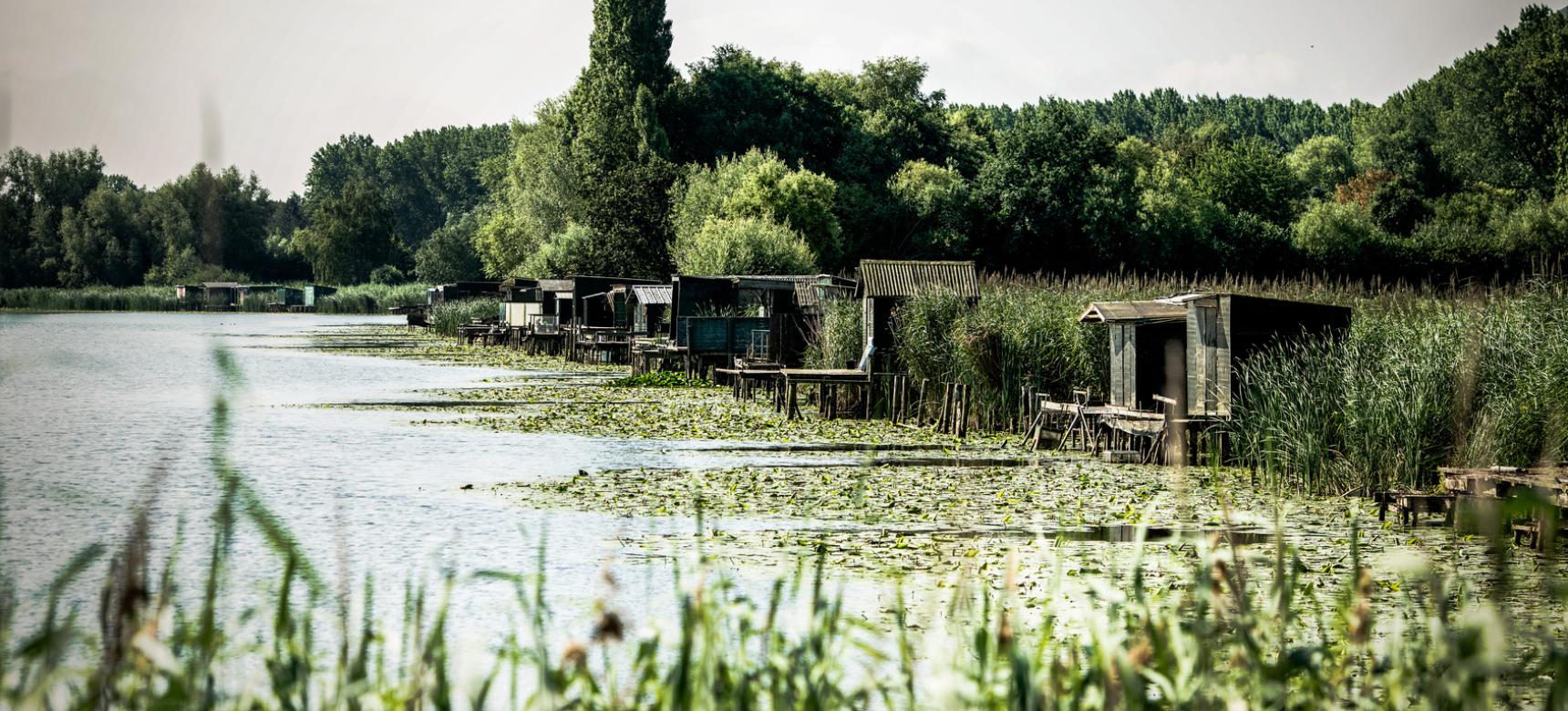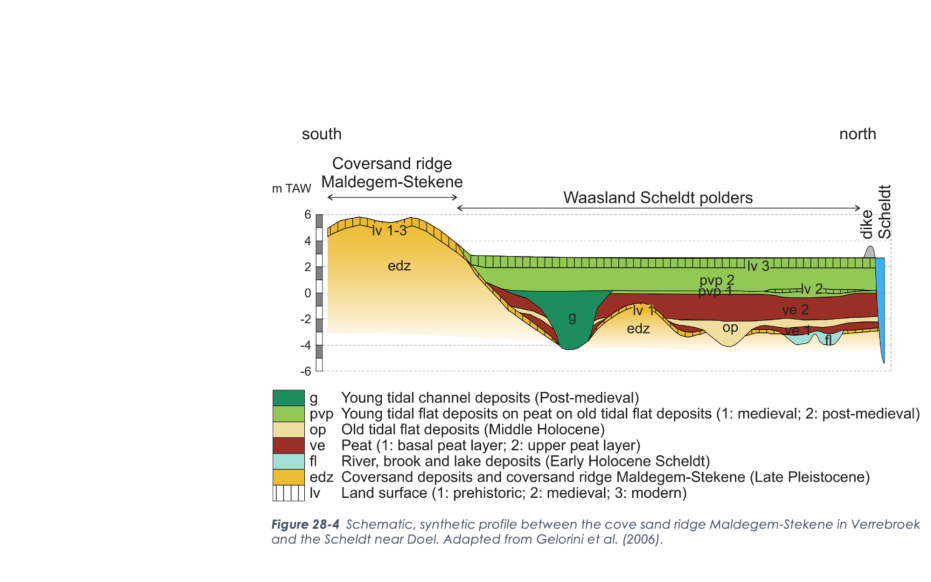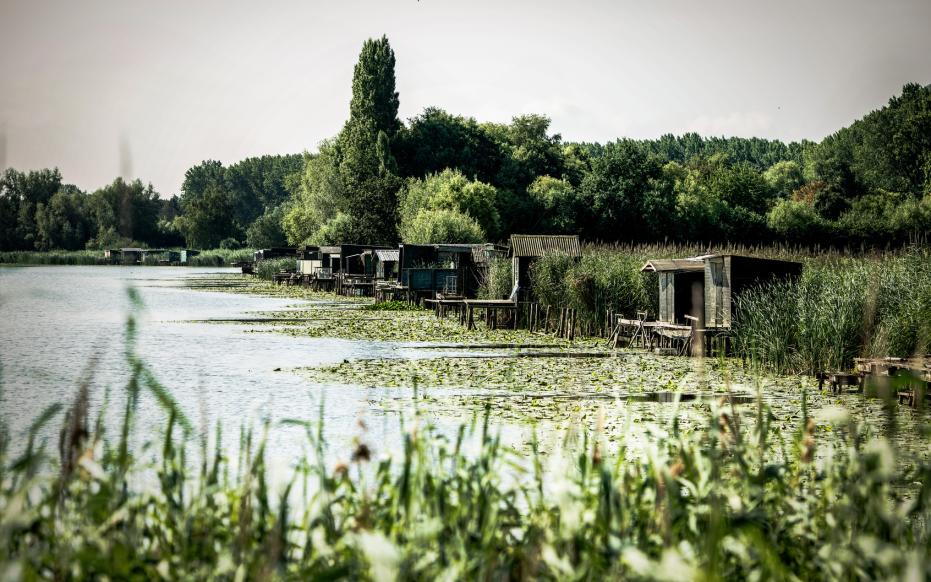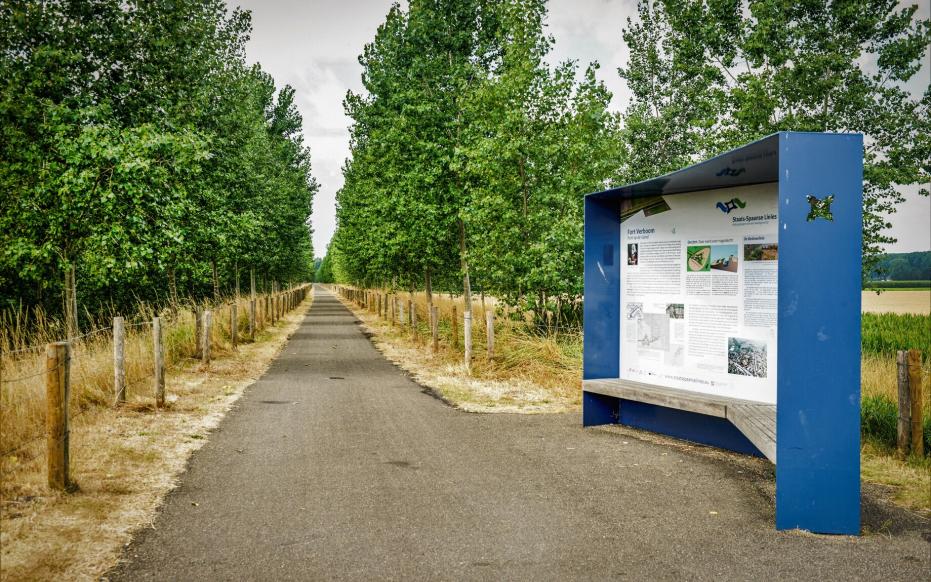Peatland landscape
The low position of the Waasland Scheldt polders arises during the Pleistocene, when an eastern tributary of the Flemish valley cuts into the Neogene sediments. This valley is filled with sandy deposits of a river during the last ice age. Wind brings a new layer of cover sand on top of this, but low cover sand ridges and dunes are also formed. Today, these cover sand ridges still loom in Kieldrecht and Verrebroek. As it got warmer, the permafrost in the sandy soil thawed and small pools formed in the lows, creating a tundra-like landscape. This landscape was later re-covered by wind-blown sand. Limited sediment deposition during the Early Holocene leads to landscape stabilization and soil formation on ridges along a slow-flowing, vanished tributary of the meandering Scheldt River.




